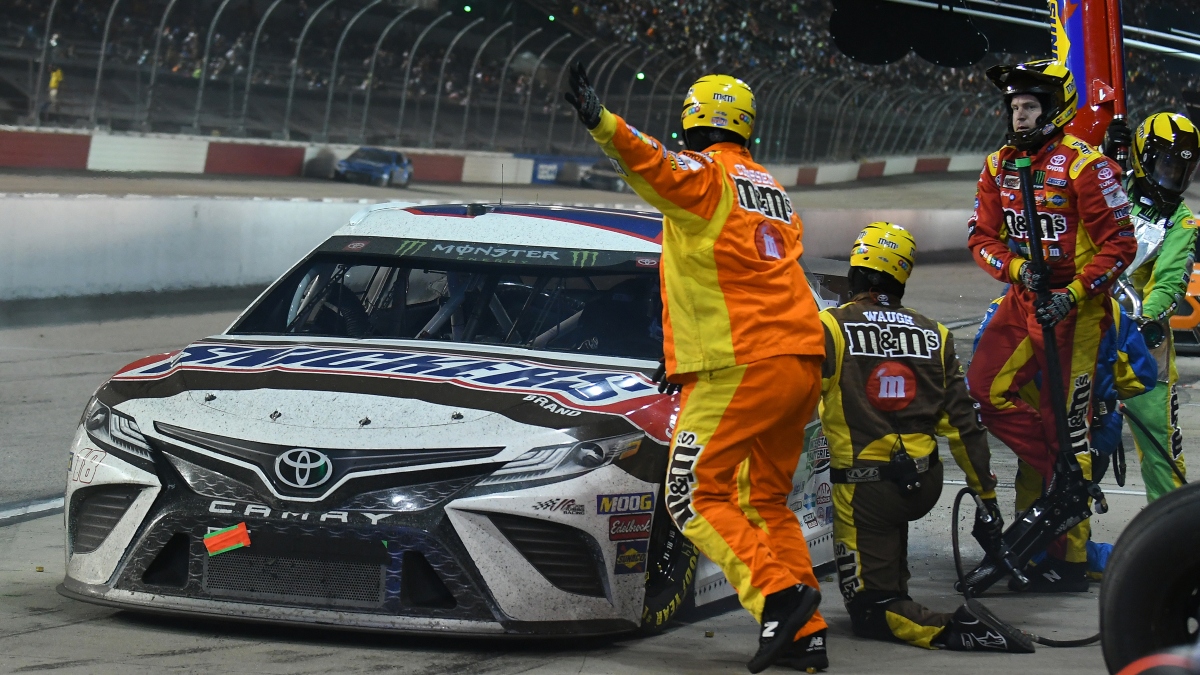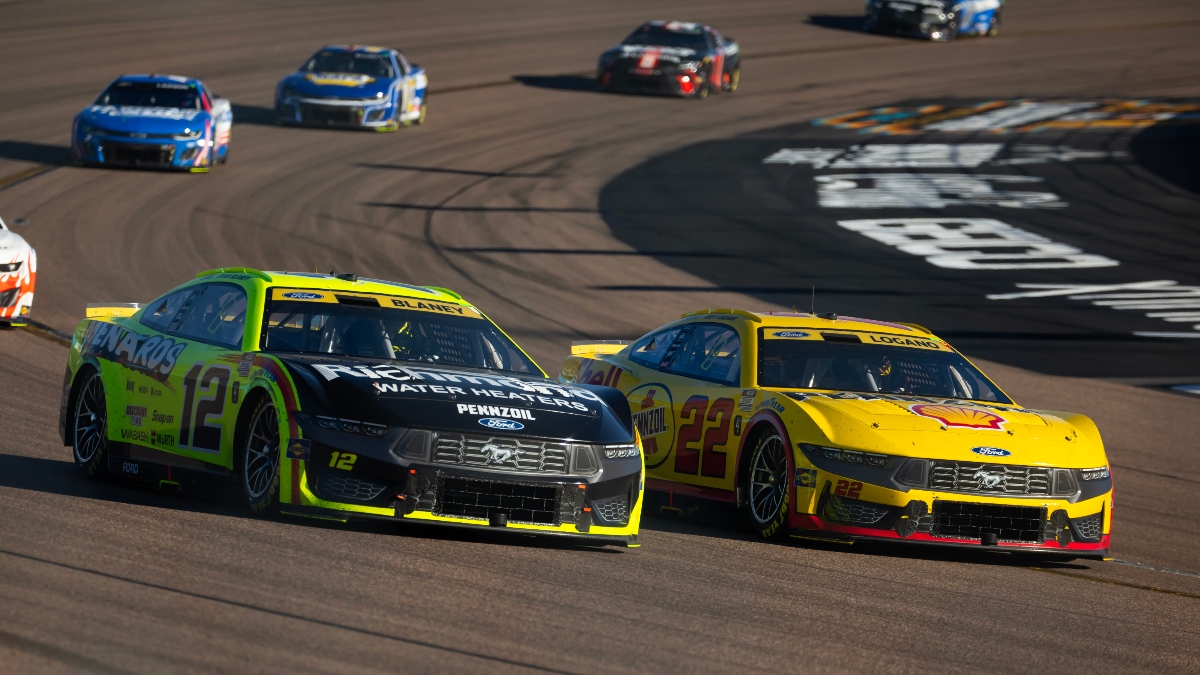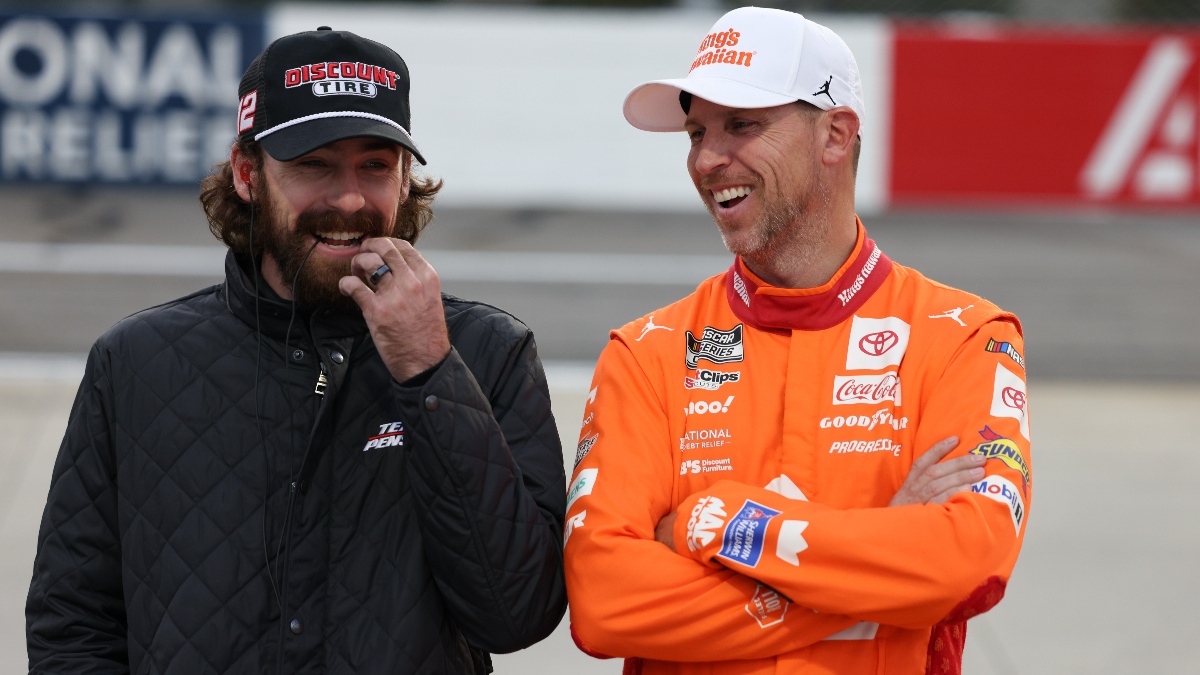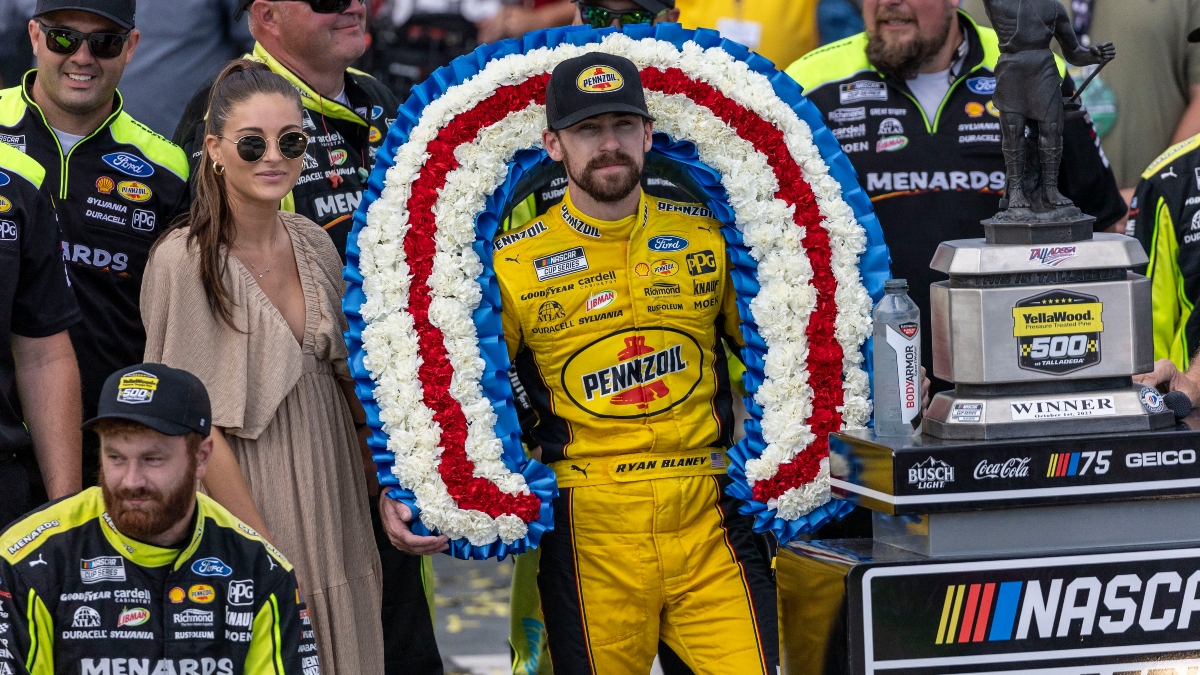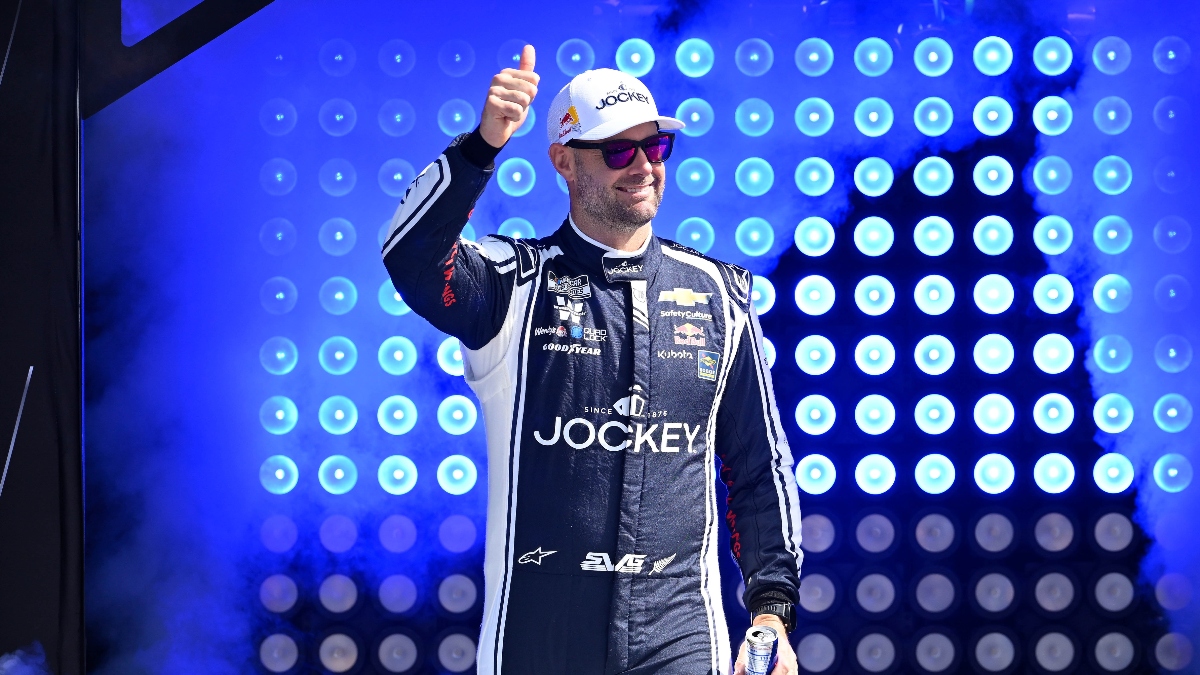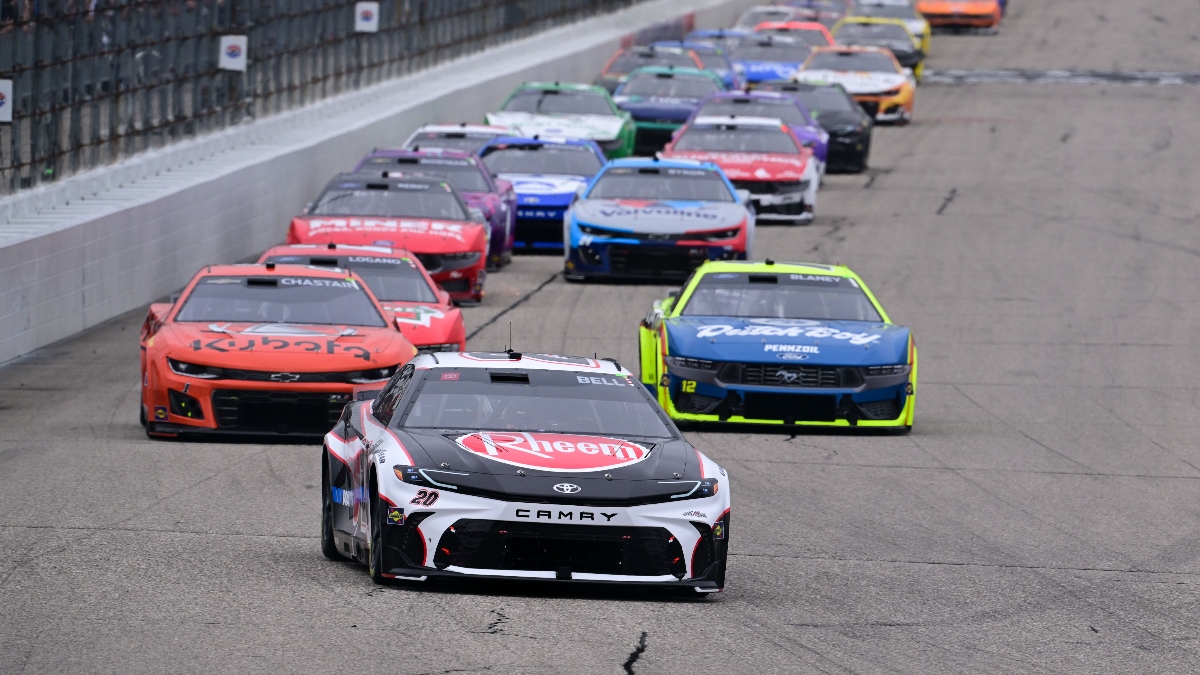- Sunday's NASCAR race at Darlington includes a $1 million DFS contest at DraftKings.
- Nick Giffen breaks down what NASCAR DFS players need to know to make the best picks possible for The Real Heroes 400.
- Learn more about optimal NASCAR DFS strategy before making your NASCAR at Darlington DraftKings picks.
The sports world starts to turn again with the return of the NASCAR Cup Series to Darlington Raceway on Sunday. The Real Heroes 400 will feature 293 laps at the egg-shaped track.
Because of the global COVID-19 pandemic, the procedures for this race weekend will be significantly altered, as will other races in the near future. I'm going to outline the procedures for Sunday's race, as well as give a daily fantasy sports (DFS) primer and preview focused on DraftKings' million-dollar contest.
Best NASCAR Promo!Win your bet if Kyle Busch finishes just ONE lap.
NASCAR at Darlington DraftKings Picks & Tips
DraftKings NASCAR DFS Scoring System & Rules
NASCAR DFS veterans can jump ahead to the next section, but if you're looking for some action and fancy trying your hand at NASCAR DFS, you couldn't have picked a better sport. NASCAR has one of the best sweats in all of DFS, and the scoring system is simple and easy to follow.
There are four ways to score points on DraftKings:
- Finishing position
- Place differential
- Laps led
- Fastest laps
Finishing position is straightforward. The better a driver finishes, the more points he gets. On DraftKings, a driver's finishing position points can be calculated as follows:
Finishing Points = 44 – Finishing Position
In other words, if a driver finishes 10th, he'll get 44 – 10 points, for a total of 34. The only exception to this rule is for a driver that wins the race. He will get an additional three (3) bonus points. So a winning driver will get 44 – 1 + 3 = 46 finishing position points.
Place differentialis another simple calculation. Drivers gain one point for every position they improve from the start of the race to the end of the race, and lose one point for every position they fall. That means place differential is calculated as:
Place Differential Points = Starting Position – Finishing Position
If a driver starts 30th and finishes 10th, that's 30 – 10 = 20 points for place differential. Conversely, if the driver were to fall from 15th to 33rd, that would be 15 – 33 = -18 points. From this, you can see that both floor and ceiling are built in by picking drivers that start further back. They can gain more positions, and lose fewer positions.
Laps ledand fastest laps are often lumped together and called dominator points. A driver gets 0.25 points for every lap he leads. There are also 0.5 points available to a driver for turning the fastest lap on each lap, so long as the lap is run under green-flag conditions.
These two metrics are often correlated. Faster drivers lead more laps and post more fastest laps. We call these drivers "dominators." These drivers also tend to start at the front of the field.
Check out FantasyLabs' new NASCAR models and multi-lineup optimizers for DraftKings and FanDuel DFS contests. FREE for a limited time!
Roster Construction
The simplest way to explain roster construction is two-fold. First, find the drivers that will dominate the race, and get them in your lineup. Often, that will mean putting one to three dominant drivers into your lineup.
The exact number will depend on the track, the number of laps and driver projections. You don't want to pick too many dominators, because if you pick a potential dominator that doesn't lead, he typically has a high price and doesn't gain many positions. So the key is to pick exactly the correct number of dominating drivers.
After that, you want to fill out your lineup with drivers that optimize the combination of place differential and finishing position, while staying under the salary cap.
This weekend's The Real Heroes at Darlington consists of 296 laps, which is on the high side. There will likely be at least two dominating drivers, and possibly three. If you are multi-entering (meaning entering multiple lineups into single contests), I'd look to fill out most lineups with two or three potential dominators.
[Bet on NASCAR's return now at DraftKings & get a 50% profit boost! CO, NJ, PA, IN and WV only.]
Race Schedule
As I mentioned, the race weekend will have an unusual schedule because of the COVID-19 pandemic. This will be a one-day event, with no practice and no qualifying. Instead, starting positions will be determined by a combination of point standings and random draws.
Click here to see how the starting lineup will be determined.
This will give DFS players plenty of time to analyze the starting lineup and come up with a strategy for building lineups.
Key NASCAR DFS Stats
As a mathematician, I like to build statistical models to best simulate each race. Different race tracks will have different factors that come into play. This is because tracks differ in length, width, banking, shape and age.
All of these factors can change the techniques a driver uses to navigate the track, and likewise, the statistical history of that is important. For Darlington, the most significant factors in my model are:
- Average Driver Rating over the last 15 races*
- Average Driver Rating over the last eight races at steep tracks (Homestead, Dover, Darlington and Bristol)
- Dominator performance (average dominator points) over the last 15 steep-tracks and 1.5-mile tracks (add Atlanta, Las Vegas, Kentucky, Kansas, Charlotte, Texas and Chicagoland)
- Year-to-date average green flag speed at all tracks more than one mile in length (except Daytona and Talladega)**
At Darlington, long-run practice speed also matters a lot. However, with no practice this factor is removed from the model and significantly reduces its predictability. That means, my model won't be as confident in its predictions as it would on other weekends. Two other caveats:
*Darlington has recently been a single race toward the end of the season. Because this is only the fifth race of the year, if we go back 15 races that means we are dipping into 2019 territory for two-thirds of the data. We should lower the weight of this statistic in our evaluation.
** Likewise, we have only four complete races, including only two at non-superspeedway tracks more than one mile in length. We can use those two races to inform this statistic, but again, we should not give too much weight here.
With so much uncertainty, this is a great time to go a bit contrarian. I'll break down my my contrarian picks and GPP strategy in more detail after the starting lineup is revealed.


